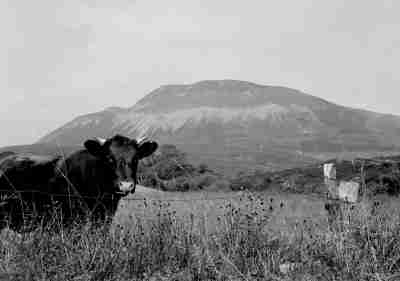Camping Trip to Sligo
1966
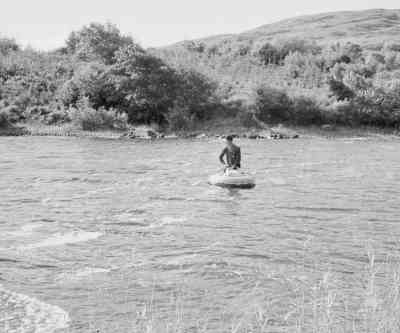
When I was in college I met a German student, Joseph Heinrichs, who, being originally from Bavaria, had a great sympathy with the Irish psyche. Joseph was a class of a sane lunatic, and he persuaded me to accompany him on a camping/boating trip to Lough Gill in County Sligo. Afficionados of mysticism and early 20th century Irish culture will realise that this lake was the location of the "Lake Isle of Inisfree" made famous by WB Yeats's poem of the same name.
It must have been a sign of the times that we succeeded in hitch hiking all the way from Dublin to the shores of Lough Gill with our rucksacks, a tent and an inflatable rubber dinghy.
A helpful garage man by the shore inflated the dinghy and we set out across the lake to find Inisfree in the thickest fog imaginable. I was terrified.
It was like crossing the Rubicon to Hades: quite soon we could see neither shore and the dinghy was dangerously low in the water, weighed down by our gear. After an eternity in the twilight zone we sighted shore, any shore, which turned out to be Church Island, so we landed and pitched tent for the night.
The following day we continued the journey in daylight to Inisfree, and pitched tent on this tiny island.
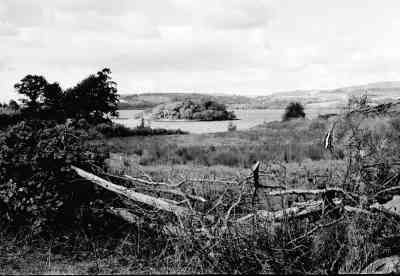

We then went ashore to a nearby jetty and met John O'Connor and his wife who lived in a small cottage beside the jetty. John had a boat with an outboard motor on which he took Yanks for a trip around Inisfree.
He eventually confided to us that the island used to be known as Rat Island before its leap to literary fame. This did nothing to reassure us during the long nights in our flimsy and isolated tent.
Subsequent checking out the OS maps showed that its official title was Inisfree as early as 1840. But there is some evidence that the island was known locally as Rat Island.
Much of Sligo is dominated by Benbulben, whose shape changes depending on the angle of view, and whose angle-edge makes a striking background to many of Sligo's most famous scenes, including the graveyard of the poet himself .
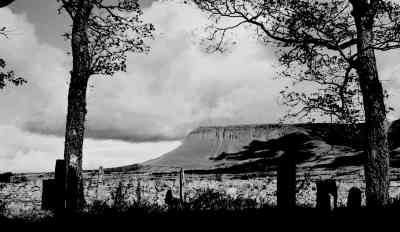
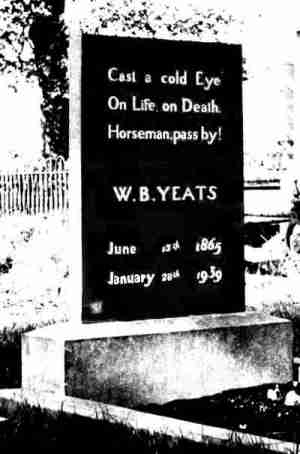
I am setting out the text of Yeats's poem on Innisfree for those not familiar with it . An incorrect version appears on a tourist sign in the graveyard. Most Irish will have come across the poem at some stage in their school English courses and to us it is now quite hackneyed. However, you might as well get the flavour of the romanticism bestowed by the great man on Rat Island.
THE LAKE ISLE OF INNISFREE
I will arise and go now, and go to Innisfree,
And a small cabin build there, of clay and wattles made:
Nine bean-rows will I have there, a hive for the honey-bee,
And live alone in the bee-loud glade.
And I shall have some peace there, for peace comes dropping slow,
Dropping from the veils of the morning to where the cricket sings:
There midnight's all a-glimmer, and noon a purple glow,
And evening full of the linnet's wings.
I will arise and go now, for always night and day
I hear lake water lapping with low sounds by the shore;
While I stand on the roadway, or on the pavements gray,
I hear it in the deep heart's core.
During our sligo sojourn we went to see Bertie Anderson and we also hitched to Teelin in Co. Donegal from our Inisfree base. While there we stayed in the An Oige hostel which was run by two elderly ladies.
One of them put her eye on Joseph's Aran sweater which had an unusual pattern of knobs on. When we were going out for a walk, she asked if she could have a loan of it for half an hour. Joseph was reluctant as he had promised the person who gave it to him never to part with it for however short a period but he eventually relented under the persuasive powers of his host.
When we came back the lady had knitted a copy of the pattern in a six inch square and God knows what happened after that. This was my first, and most impressive, experience of native intellectual property infringement.
Details of the Aran pattern
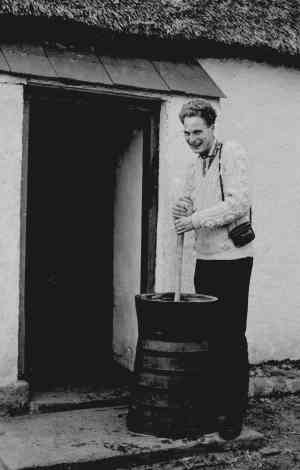
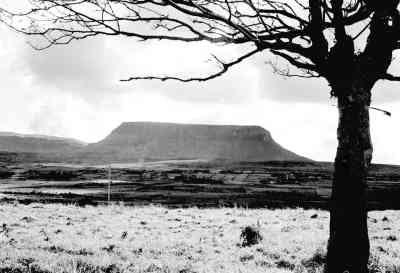
Hitching home from Sligo proved a bit more difficult than hitching down. It was getting dark when we reached Longford and we decided that there was no way both of us were going to be picked up along with all the gear, including the tent and inflatable dinghy. So we agreed Joseph would try and hitch first and I would take my chances afterwards. He was lucky and got a lift, gear and all. I stood for hours to no avail and was faced with finding somewhere to stay for the night.
Remember we were students and by this stage we hadn't a penny between us. I remembered my friend, Tom Ferris, telling me how he had cadged a night in a cell in Norway when he was traveling there, so I headed for the local Garda station in a bid to emulate his stroke of genius.
The Guards were sympathetic. They suggested I stay in a nearby car lot in one of the cars overnight. I said I would be very nervous doing that. Eventually one of the guards inquired if I would really mind staying in a cell overnight - I would, of course, have to be locked in. I jumped at the chance, spent a very comfortable and peaceful night and was brought a cup of tea the next morning.
Suitably refreshed, my luck changed, and I got a hitch quicktime back to Dublin.
